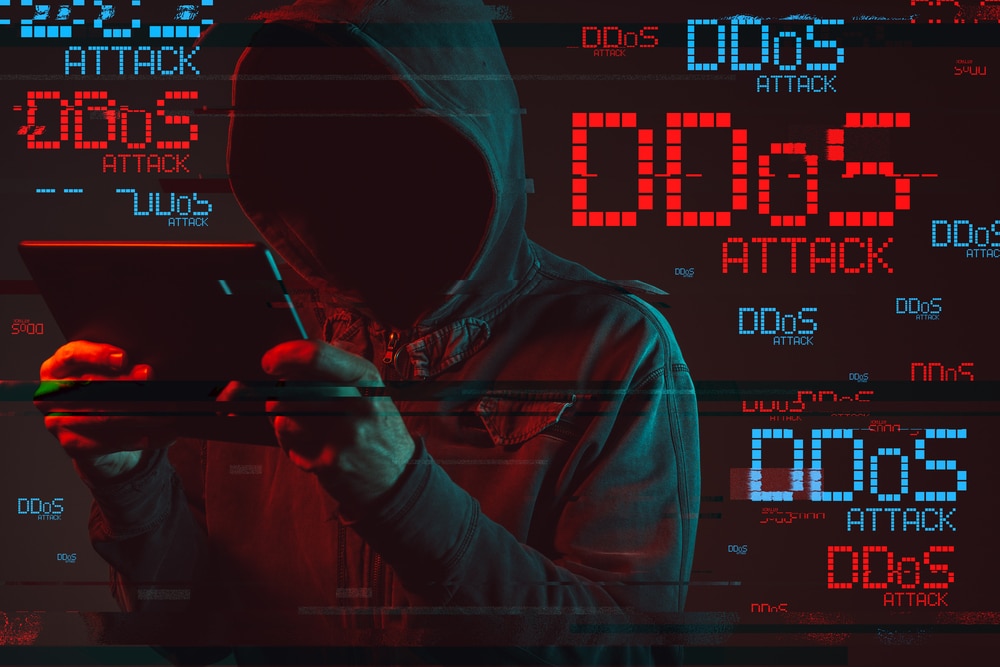
Malicious DDoS attacks up by 150 percent
In 2022, the number of DDoS attacks grew 150 percent globally compared to the previous year, while the number of attacks in the Americas rose even faster, increasing 212 percent compared to 2021.
These figures are from the 2022 Global Threat Analysis Report released today by Radware which also shows the frequency of DDoS attacks saw a significant uptick. Globally, organizations mitigated an average of 29.3 attacks per day during the fourth quarter of 2022, 3.5 times more compared to 8.4 attacks per day at the end of 2021.

Continuous Threat Exposure Management and what it means for enterprise security [Q&A]
This summer, Gartner introduced Continuous Threat Exposure Management (CTEM). This is a set of processes and capabilities that allow organizations to create a system for review of exposures that is faster than the periodic project-based approach.
With endless threats and vulnerabilities hammering today's organizations, exposure management that evaluates the accessibility, exposure and exploitability of all digital and physical assets is necessary to govern and prioritize risk reduction for enterprises.

The changing landscape of privacy and compliance
In the past decade, privacy-related legislation has developed considerably. The 'privacy industry' has gone through a metamorphosis not seen in many other disciplines. Now, as we reflect on the future post-pandemic, we must recognize that being able to quickly access and share accurate data is fundamental to everyone.
When thinking about this, it’s important to remember that there’s a heavy overlap between business and personal aspects, an example of this is password managers. These will have both personal and work-related credentials saved to them, which can be hard to distinguish, and this is why corporate family use plans exist.

IT leaders feel increasingly vulnerable to cyber threats
As businesses adopt more complex hybrid IT environments and raise budgets to fend off cyberattacks, as well as keep up with production environments diversifying across various clouds, a new study finds that IT leaders increasingly feel they aren't sufficiently protected.
The latest Data protection Trends Report from data protection specialist Veeam Software shows that a top priority of organizations this year is improving reliability and success of backups, followed by ensuring that Infrastructure as a Service (IaaS) and Software as a Service (SaaS) protection is equal to the protection they rely on for datacenter-centric workloads.

Taking a battlefield approach to cybersecurity [Q&A]
You'll often hear cybersecurity discussed in military terms, as a war, or a battle, or a conflict. So should enterprises be taking a defensive approach that draws on military thinking?
Tom Gorup is VP of security operations at Fortra's Alert Logic, a managed detection and response specialist. He's also a veteran of six years in the US Army with tours of Iraq and Afghanistan. We spoke to him to discover how lessons learned on the battlefield can be applied to cybersecurity.

Unsafe on any site -- over three-quarters of Americans admit to risky online behavior
A new report finds that 78 percent of Americans indulge in risky online behaviors that open them up to cyber threats, such as reusing or sharing passwords, skipping software updates and more -- a 14 percent increase from just two years ago.
The Xfinity Cyber Health Report from Comcast combines data from a new consumer survey of 1,000 US adults, conducted by Wakefield Research, with national threat data collected by Xfinity's xFi Advanced Security platform.

SMB's security spending is not keeping up with threats
A survey of over 1,200 cybersecurity decision-makers from small and medium-sized businesses in Europe and North America shows 74 percent believe that they are more vulnerable to cyberattacks than enterprises.
The study from ESET also reveals that 70 percent of businesses surveyed admit that their investment in cybersecurity hasn't kept pace with recent changes to their operational models such as hybrid working.

Cyber threat activity continues to grow in Q3
New data from managed security service provider Nuspire reveals large increases in overall threat activity in the second quarter of this year continued throughout Q3, with additional growth in both exploits and botnets.
There's been a 236.22 percent jump in Kryptik variants -- a type of trojan malware distributed to victims through phishing campaigns, the goal being to steal information, including cryptocurrency wallets, files and SSH keys.

Understanding threat detection methods [Q&A]
Detecting threats today isn't just about deciding which methods to use, but also which data. Endpoint server and workstation logs are a start, but major blind spots still exist unless threat detection visibility extends to network and cloud as well.
In order to be effective, security teams need to look at what data to use, what the science says can be done with the data, and what to expect. We spoke to Andrew Hollister, CISO at LogRhythm to find out more.

The cyber threats and trends that will dominate going into 2023
It might still be a bit early to begin thinking about next year, but new research from Intel 471 analyzes recent and commonly used tactics, techniques and procedures (TTPs) that have been adopted by prominent threat actors.
It also looks at how these threats have affected enterprises, along with predictive intelligence assessments on threats that organizations should be prepared to thwart over the next year.

60 percent of security pros say their strategy doesn't keep up with the threat landscape
A new survey reveals that 60 percent of respondents believe their overall security strategy does not keep pace with the threat landscape, and that they are either lagging behind (20 percent), treading water (13 percent), or merely running to keep up (27 percent).
The study from privileged access management specialist Delinea also shows that 84 percent of organizations experienced an identity-related security breach in the last 18 months, despite 40 percent of respondents believing they have the right strategy in place.

Lack of collaboration between teams leaves gaps for cybercriminals to exploit
While most IT and security operations (SecOps) decision-makers believe they should jointly share the responsibility for their organization's data security strategy, many of these teams are not collaborating as effectively as possible to address growing cyber threats.
This is one of the findings of a new report from data management firm Cohesity which also shows that of those respondents who believe collaboration is weak between IT and security, nearly half think their organization is more exposed to cyber threats as a result.

Poor alerts hamper effective automation of threat detection
According to a new report 85 percent of IT security professionals have experienced preventable business impacts resulting from insufficient response procedures, while 97 percent say that more accurate alerting would increase their confidence in automating threat response actions.
The State of the Modern SOC report from Deepwatch is based on a survey by Dimensional Research of over 300 security professionals, working at US organizations with 1,000 or more employees.

The increasing importance of Cyber Threat Intelligence
Globally, the cyber threat level to organizations remains high and the current situation only serves to highlight this further. To this point, any organization that has substantial gaps in its cybersecurity capabilities is operating at risk, and when the threat landscape changes, as it has now, so we become more aware of the vulnerabilities that we have carried for some time and the need for better Cyber Threat Intelligence.
Two major cybersecurity events of the past 12 months really showcase the requirement for CTI in network security operations -- the SolarWinds software supply chain attack which broke at the start of 2021 and the Log4j vulnerability response process that occurred at the end of 2021. Both of these incidents highlight the need to rapidly gain situational awareness, contextualize vast amounts of information being shared, and prioritize remediation of significant threats.

The role of threat intelligence platforms in implementing extended detection and response
As the new year continues to unfold, cybersecurity budget holders will be deep into the process of identifying where to allocate funds to best enhance protection against cyberthreats. The good news is that budgets are rising, with industry commentators frequently reporting that companies are committing more money to strengthening their posture against persistent and sophisticated threats.
Firmly on the list of favored approaches is extended detection and response (XDR), which has been rapidly gathering momentum in the past two years. Analysts are predicting triple digit growth in the market as businesses aim to implement a complete, end-to-end security approach. However, before businesses dive headlong into XDR investments, it is worth exploring what we mean by XDR, how it fits with existing tools, and where threat intelligence platforms can be leveraged to help companies bridge the delta between what they have now and an ideal future state of effective XDR.
